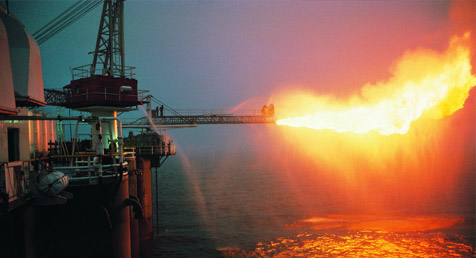

Indonesia opened a rights tender for 21 oil and gas exploration blocks on Friday, four of which are for unconventional gas concessions on the islands of Borneo and Sumatra, as Southeast Asia’s largest economy moves to shore up its energy security.
Besides two shale gas blocks and two coalbed methane blocks, the tender includes 17 offshore blocks that are mostly in the eastern half of the archipelago, according to a release from the Energy and Mineral Resources Ministry.
Indonesia is struggling to reverse declining oil and gas output to meet expanding energy needs amid uncertainty over regulatory and other issues that have put off investors in the sector. The areas being offered are estimated to contain up to 3.1 billion barrels of oil and 57.6 trillion cubic feet of gas, according to Edy Hermantoro, the ministry’s director general of oil and gas.
The first round of bidding on the blocks is scheduled to begin in mid-June. Most of the offshore blocks will require overseas investors to carry out exploration, Lukman Mahfoedz, Indonesia Petroleum Association (IPA) president told Reuters during an interview last month.
“The national companies cannot cover the risks in the deepwater drilling in eastern Indonesia, where one well costs $200 million,” Lukman said. Those blocks would require the participation of international oil companies, he said. The coalbed methane blocks are located on Kalimantan, as the Indonesian portion of Borneo is known. One of the shale gas blocks is on Sumatra island, and the other in Kalimantan.
State oil and gas company Pertamina this week signed a 30-year contract on Indonesia’s first shale gas concession that it said may lead to $8 billion in development costs – although it also said it would need to tap into the expertise of Canada’s Talisman Energy to exploit the unconventional resource.
Indonesia’s oil output has fallen to around 830,000 barrels a day, nearly half of levels seen in the 1990s. Its gas output dropped to about 8.2 billion cubic feet a day last year, down about 12 percent from 2010.
Gallagher Re has shed light on the significant challenges insurers face when providing coverage for…
The Australian government will disburse AUD 1.7 million (USD 1.1m/EUR 1m) in grant funding to…
GlobalData’s latest report, ‘Asia Pacific Renewable Energy Policy Handbook 2024’ is among the latest region-specific…
The electrical generation market is facing a number of challenges, including the need to increase…
Nuclear energy has emerged as a prominent player in Asia's energy landscape, offering a reliable…
The pursuit of a low-carbon future has gained significant momentum globally, and Asia stands tall…